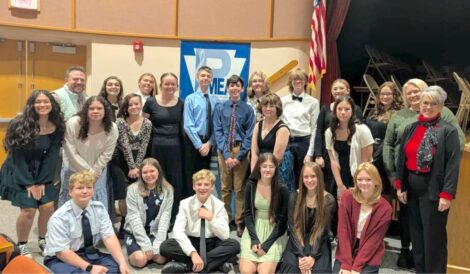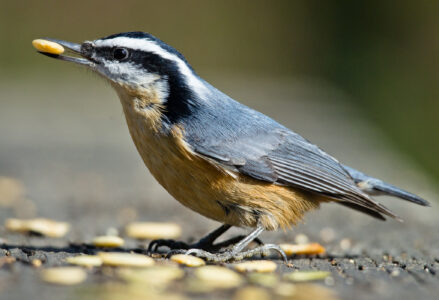Senses and Nature

Have you ever smelled Skunk Cabbage? When broken, this stem and leaf smell very similar to a skunk spray.
The emphasis we as humans place on sight bleeds into how we describe our experiences with the natural world. We will often talk about what we see; whether it’s spotting the movement of wildlife or the colors in a field of flowers. We may use descriptors like colors and patterns or compare new sights to something more familiar. As humans we also anthropomorphize our observations, often by describing the “look” something has, such as calling an incoming storm “angry”.
Although most people rely on their sight, it isn’t often that we take a moment to sit and really think about what information our eyes absorb. At a glance it’s easy to identify, say, a tree. But by taking time to look closer you will notice increasing details, including things you may not have thought about before. Perhaps the bark of the tree has an interesting pattern or texture and is covered in mosses and lichens. After searching for a minute longer you may begin to see movement, such as insects crawling up and down the trunk. What was once just a simple tree has transformed before your eyes into a detailed scene.
But even though sight is arguably our most important sense as humans, it isn’t the only one. There are other ways of exploring nature through different senses.
For example, on a damp summer day when closing your eyes, you may smell petrichor, which is the unique scent of the ground after a fresh rain. It is almost indescribable but instantly identifiable. Many smells are strongly linked to our memories as well. Imagine the smell of warm chocolate chip cookies and you may recall the experience of baking with family or friends. This connection extends to memories and experiences of nature, whether it’s something pleasant like the scent of wildflowers or unpleasant like the stink of Skunk Cabbage.
Sound is also a way to connect with nature, because in addition to the landscape you see there is a whole soundscape to hear. The sound of nature can change significantly based on factors like time of day, location, and weather. During the morning, in Audubon’s backyard, there are usually geese honking, songbirds chirping, frogs singing, and occasionally a splash can be heard as something enters the water. On the other hand, in a meadow you might hear bees buzzing around flowers and the rustle of tall grass in a small breeze. Later in the season there will likely be the ubiquitous buzz of summer cicadas outdoors. During a storm the sound of rain can be heard, though it will be different depending on the intensity and where the raindrops land. Sometimes the sound of light rain is calming, but other times it’s a torrential downpour accompanied by cracking thunder. In the winter falling snow seems to muffle all other noises besides the crunch of walking through a snowbank.
Touch can be felt with hands through the rough bark of a tree or the smoothness of a river rock. It can also be sensed by the whole body through the ambient temperature and the warmth of sun on your face or the refreshing coolness of a summer breeze.
Being in nature is a multi-sensory experience. When my eyes are closed, I feel as if my other senses are heightened, and I am more in tune with what those senses are picking up. Standing in a forest with my eyes closed, I feel the cool breeze at my back as it rustles the leaves overhead. Above I can hear squirrels chatter as they chase each other from tree to tree while a bird sings, making its presence known. Underneath my feet between the leaf litter, I can feel a spot with soft and squishy moss. Meanwhile I smell the fresh scent of a pine from a fallen log as my fingers get sticky from accidentally touching the sap. Sitting in nature and being present, taking in that sensory information, is a way of practicing mindfulness, and one that I highly recommend if you can find the opportunity.
Audubon Community Nature Center builds and nurtures connections between people and nature. ACNC is located just east of Route 62 between Warren and Jamestown. The trails are open from dawn to dusk and birds of prey can be viewed anytime the trails are open. The Nature Center is open from 10 a.m. until 4:30 p.m. daily except Sunday when it opens at 1 p.m. More information can be found online at auduboncnc.org or by calling (716) 569-2345.


